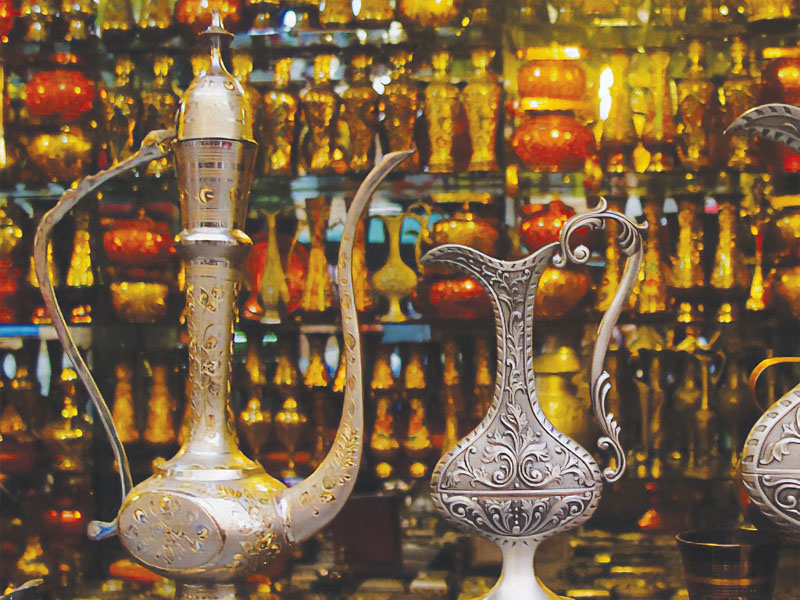An Approach to Studying Crafts and Handmade Products
Issue 14

Nimr Sarhan (Palestine)
Research into crafts and handmade products may be of interest to large segments of Arab society, in addition to being relevant to impoverished craftsmen, to the businessmen who invest in them and to people who work in the tourism industry.

Crafts include both inexpensive products and valuable goods such as ships, pearls, carpets and silk embroidery. Some industries depend on local production while others rely on foreign products, such as the Chinese and Japanese-made lamps and embroidery thread that are exported to the Middle East. In order to compete with foreign producers, local manufacturers have introduced mechanization to increase and expedite production.
These crafts and handmade products also have artistic, decorative and aesthetic merit, and some are used in witchcraft and traditional medicine. The overlap between crafts and the metaphysical makes it difficult to classify these products and their producers and therefore it is difficult to study them.

The handmade products and crafts industries are dependent on locally available raw materials; those who grow wheat produce items made of straw, craftsmen who live in areas with palm trees make products using palm fronds and people who live near the sea work in the fishing, pearl-diving and shipbuilding industries.
Palestine, the cradle of religions, produces souvenirs of the Holy Land for pilgrims. In Mecca, Muslim pilgrims are keen to buy religious souvenirs even if they are imported. The craft industries are therefore closely connected to tourism, because tourists enjoy purchasing local crafts.
The study investigates crafts and handmade products using the historical descriptive approach and the functional approach.
Craft industries play a vital role in providing job opportunities.
From a broader viewpoint, these industries benefit society by encouraging tourism and by contributing to the gross national product.
The issue is how to make crafts and handmade products economically rewarding. Both fine art and crafts involve converting raw materials into income-generating products, but folk art can be marketed on a larger scale because it appeals to both local and foreign buyers. Local products may also be of great value internationally, for example, the Arabian Gulf supplied half the world’s pearls until recently.
The Arab world’s crafts are not just means of artistic expression; they are also sources of income and employment opportunities.

It follows that research methodology should take into consideration the nature and function of these industries and their economic contributions.
The Arabic word ‘Hirfa’ (craft) refers to an art or talent that generates income, and craftsmen earn a living for themselves and their families. ‘Hirfa’ is a profession, as illustrated by the proverb, «The craftsman is the owner of a castle”, meaning that anyone who has a craft (as a profession) can benefit greatly from it.
The study concludes that despite industrial and technological advancements, there is still a need for the handmade products and crafts that represent traditional Arab folk art.



































































